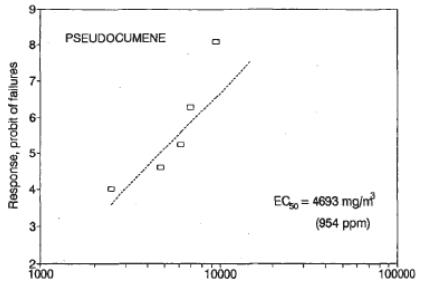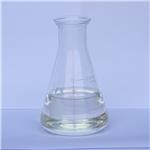1,2,4-Trimethylbenzene- Toxicity
Feb 18,2020
1,2,4-Trimethylbenzene (mesitylene) is an aromatic hydrocarbon compound commonly present in commercial solvents encompassing their boiling range. Mesitylene are the most common isomer used in commercial applications. 1,2,4-Trimethylbenzene is part of the C9 aromatic hydrocarbon solvent category subject to an US. Environmental Protection Agency (USEPA) test rule (published in the Federal Register on May 17, 1985). Aromatic hydrocarbons in hydrocarbon solvents are predominantly alkylated one ring structures as well as two aromatic ring structures which may also be alkylated.[1]
Acute toxicity studies (oral, dermal and inhalation routes of exposure) have been conducted in rats. Oral LD50 values of greater than 5000 mg/kg have been reported. For solvent products containing predominantly mixed C9 aromatic hydrocarbons, oral LD50 values have been reported as greater than 6880 mg/kg (males) and greater than 3440 mg/kg (females). LC50 values of 18,000 mg/m3 was reported for 1,2,4-TMB. For C9 aromatic solvents, the LC50 was greater than 10,200 mg/m3 (Shell Research Laboratory, 1976, unpublished study). One dermal acute study showed an LD50 value of greater than 3440 mg/kg for a C9 aromatic solvent (Shellsol A, a highly aromatic solvent boiling in the white spirit range, consisting of primarily C9 isomers particularly TMBs)


In a study to assess the potential for acute central nervous system effects, Korsak and Rydzynski evaluated the effects of acute exposure of 1,2,4-TMB (>97% pure), using male Wistar rats. In the study, rats (10/group) were exposed to concentrations of 250–2000 ppm (1227–9816 mg/m3) for 4 h. Acute central nervous system effects were assessed by measuring rotarod performance (the ability to remain on a rotating 8-cm diameter wooden rod), hot-plate behavior, and the time until a paw-lick response at 54.5. Acute exposures to 1,2,4-TMB caused concentration-dependent disturbance in rotarod performance of rats with EC50 values of 4693. Temperature discomfort, as measured by increased paw-lick response latency, was also affected by 1,2,4-TMB in a concentration-dependent manner with EC50 values of 5682.[2]
Korsak et al. evaluated the subchronic inhalation toxicity of 1,2,4-TMBin rats. For 1,2,4-TMB, rats were exposed to different concentrations for 6 hours/day, 5 days/week for three months. These exposures resulted in a low degree of systemic toxicity. Apparent adaptive responses to these exposures included a slightly higher sorbitol dehydrogenase activity in male rats at all exposure concentrations and some blood chemistry changes in male rats (e.g., decrease in red blood counts, increased white blood cell counts) exposed to the highest concentration (1230 mg/m3). As a result, the systemic NOEL was considered to be 1230 mg/m3. In both studies, respiratory irritation was reported at 123 mg/m3.
References
1.Firth MJ. Derivation of a chronic reference dose and reference concentration for trimethylbenzenes and C9 aromatic hydrocarbon solvents[J]. Regulatory Toxicology and Pharmacology, 2008, 52(3):248-256
2.Korsak R. Neurotoxic effects of acute and subchronic inhalation exposure to trimethylbenzene isomers (Pseudocumene, mesitylene, hemimellitene) in rats[J]. International Journal of Occupational Medicine and Environmental Health, 1996,9(4):341-349
Lastest Price from 1,2,4-Trimethylbenzene manufacturers
1,2,4-Trimethylbenzene

US $30.00-10.00/KG2025-04-15
- CAS:
- 95-63-6
- Min. Order:
- 50KG
- Purity:
- 99%
- Supply Ability:
- 500000kg
1,2,4-Trimethylbenzene

US $10.00/KG2024-10-11
- CAS:
- 95-63-6
- Min. Order:
- 1KG
- Purity:
- 99.%
- Supply Ability:
- 10 ton


